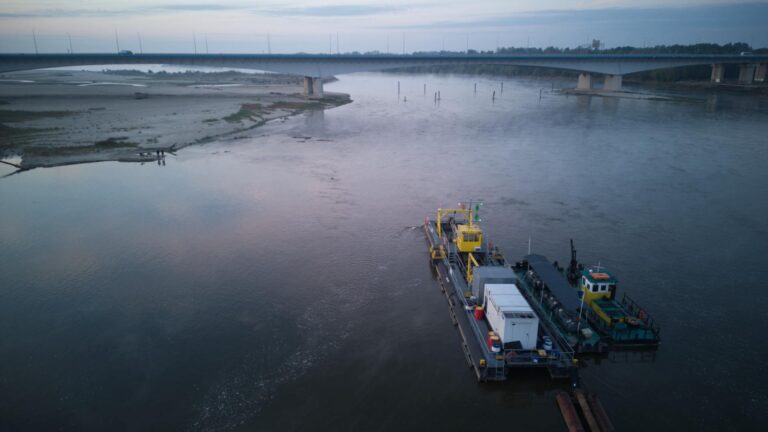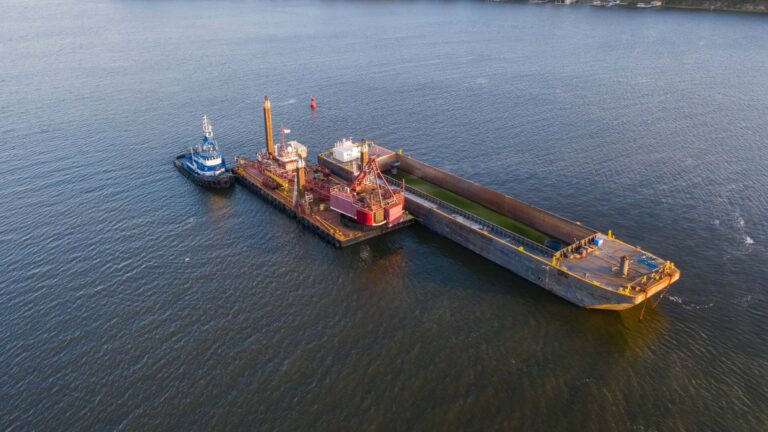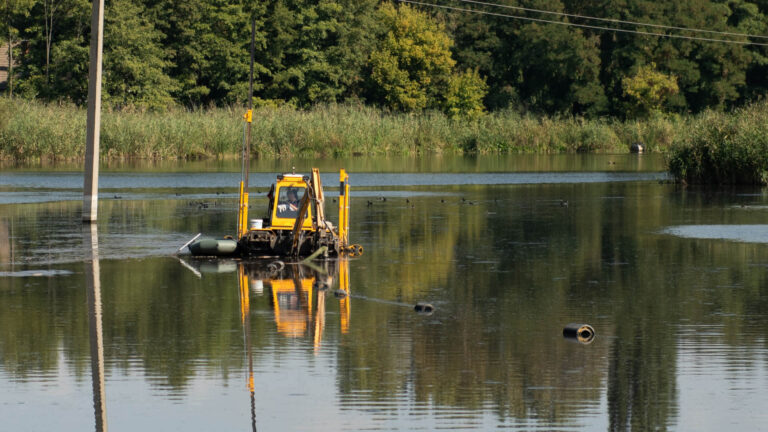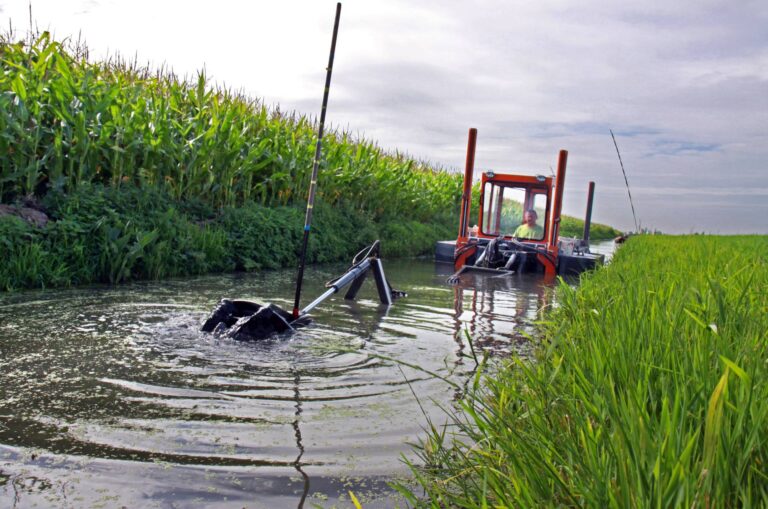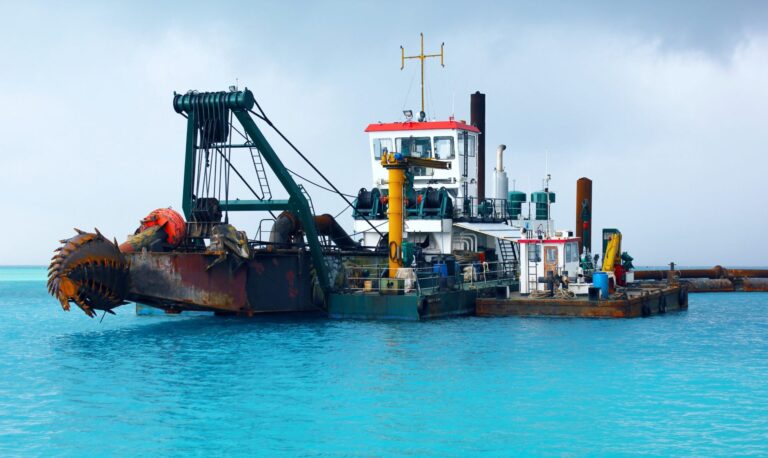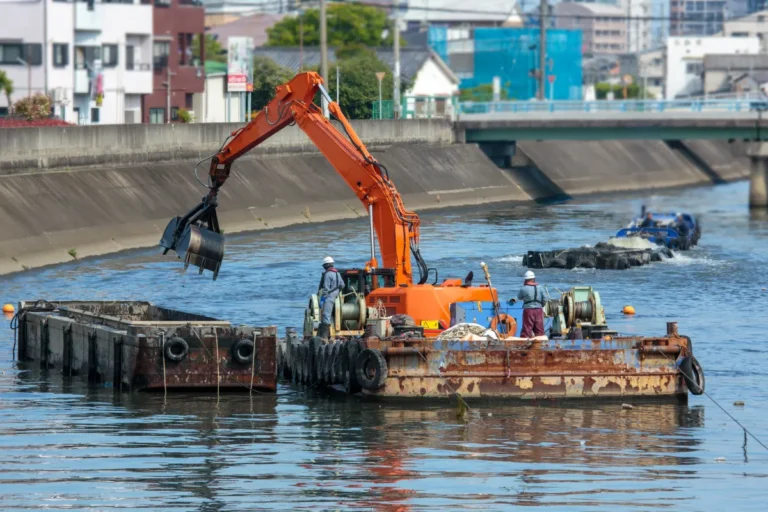Dredging plays a crucial role in supporting major industries, including shipping, mining, construction, and environmental restoration. By clearing sediment buildup from waterways, ports, and reservoirs, dredging ensures safe navigation, prevents flooding, and restores vital aquatic habitats. A dredge boat is often at the center of these operations, equipped to remove large volumes of material efficiently and reliably. Without the contributions of dredging boats, global trade and many essential infrastructure projects would face significant challenges.
However, despite its undeniable benefits, dredging activities can pose considerable environmental risks. The use of a dredge boat can disturb marine ecosystems, increase water turbidity, and release harmful pollutants trapped in sediment layers. Additionally, older models of dredging boats and dredger barges often contribute to air and noise pollution, further impacting the surrounding environment.
Recognizing these challenges highlights the growing need for more sustainable dredging practices. Modern technology and improved operational methods offer new opportunities to reduce the environmental footprint of dredging activities while maintaining their essential functions.
In this blog, we will explore the environmental impacts associated with dredge boat operations, examine the key challenges they present, and discuss the best practices and innovations available to mitigate these effects for a healthier and more sustainable future.
Understanding Dredge Boat Operations
A dredge boat is a specialized vessel designed to remove sediments, debris, and other materials from the bottom of rivers, lakes, harbors, and other bodies of water. These operations are critical for maintaining navigable waterways, preventing flooding, and restoring aquatic environments. A dredge boat can be equipped with various tools and technologies to perform its task efficiently, depending on the type of dredging operation required.
There are several types of dredging boat designs, each suited for specific projects and environments. Cutter suction dredgers are among the most common, featuring a rotating cutter head that loosens the material, which is then sucked up and pumped away. Hopper dredgers, on the other hand, collect dredged material in large onboard hoppers and are ideal for transporting sediment to offshore disposal sites. Another common setup is the dredger barge, which serves as a stable platform that supports excavators, cranes, or other specialized dredging equipment in shallow or confined areas.
Industries that heavily rely on dredging boats include shipping and port management, mining, environmental restoration, and the energy sector. In the shipping industry, dredge boat operations are essential for keeping ports and navigation channels clear of sediment buildup, ensuring the safe passage of commercial vessels. Mining operations use dredging boats to extract valuable minerals from underwater deposits, while environmental projects utilize them to remove contaminated sediments and restore natural water flows.
A dredger barge setup is particularly useful in urban infrastructure projects, where access to narrow or shallow areas is necessary. These barges offer the flexibility to carry heavy machinery and adapt to various dredging tasks, making them a valuable asset across multiple industries.
Understanding the different types of dredge boat designs and their applications highlights the versatility and importance of these vessels to modern infrastructure and environmental management. However, with their importance comes a responsibility to operate dredging boats in ways that minimize their environmental impact — a focus that is becoming increasingly critical across all industries.
Key Environmental Impacts of Dredge Boat Activity
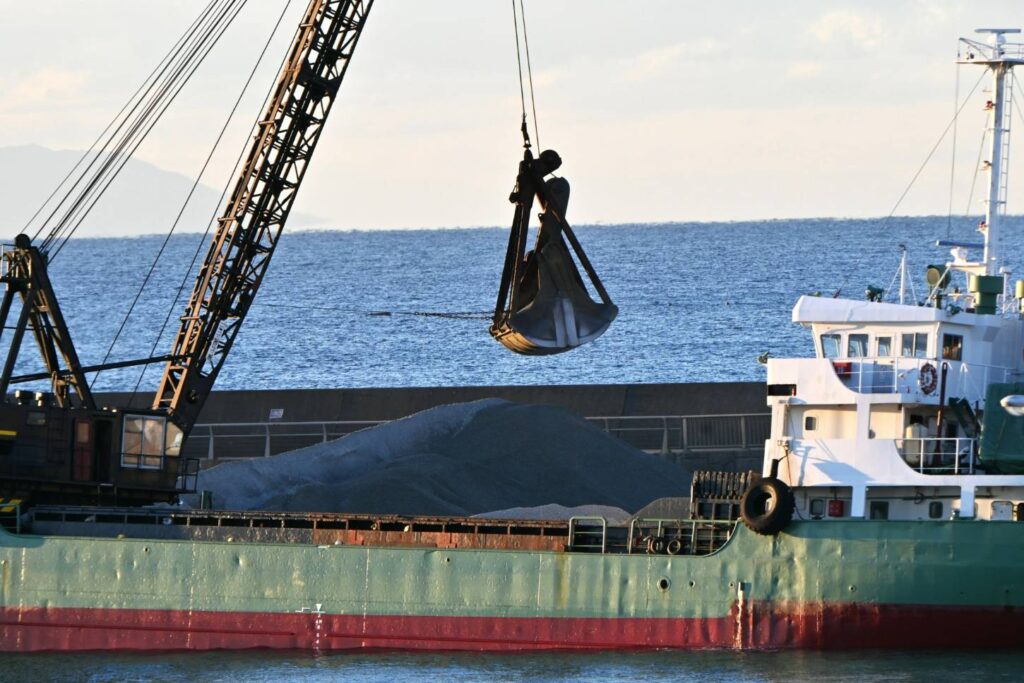
While dredging is essential for maintaining waterways and supporting various industries, it also carries significant environmental consequences when not managed carefully. Understanding the key impacts of dredge boat activity is crucial for developing effective mitigation strategies.
Sediment Disturbance and Water Turbidity
One of the primary environmental concerns associated with dredge boat operations is the disturbance of sediments on the seabed or riverbed. When a dredging boat stirs up these materials, it increases water turbidity, significantly reducing light penetration. This lack of clarity disrupts photosynthesis in aquatic plants, affects fish behavior, and can smother fragile ecosystems. Prolonged turbidity caused by repeated dredge boat activity can lead to long-term degradation of water quality and aquatic habitats.
Habitat Destruction
Another serious impact of dredging is the physical destruction of habitats. A dredge boat operating close to the bottom can disturb benthic environments, which are home to critical species such as shellfish, crustaceans, and bottom-feeding fish. Fish spawning grounds, seagrass beds, and coral reefs are particularly vulnerable to damage. The heavy machinery onboard a dredger barge or dredging boat can strip away these sensitive habitats, leading to reduced biodiversity and the collapse of local ecosystems.
Water Pollution
Sediments often serve as repositories for pollutants such as heavy metals, hydrocarbons, and other toxins. When a dredge boat or dredger barge disturbs these layers, these harmful substances can be released back into the water column. This resuspension of contaminants poses a serious threat to both marine life and human communities that rely on these waters for fishing, recreation, or drinking water sources. In some cases, the pollutants can travel significant distances from the original dredging site, spreading environmental harm far beyond the immediate area.
Noise Pollution
The noise generated by a dredging boat and its associated equipment can have a substantial impact on marine life. Many aquatic animals, particularly marine mammals and fish, rely on sound for communication, navigation, and hunting. Continuous noise from dredge boats disrupts these natural behaviors, leading to stress, disorientation, and, in some cases, displacement from important habitats. High noise levels near sensitive areas can have cascading effects on entire marine ecosystems.
Carbon Footprint
Finally, the operation of a dredge boat and dredger barge contributes to carbon emissions. Diesel-powered engines used to drive pumps, winches, and navigation systems produce greenhouse gases, adding to the overall environmental footprint of dredging operations. Older dredging boat models tend to be less efficient, consuming more fuel and emitting higher levels of pollutants compared to modern, eco-friendly designs.
By recognizing these key environmental impacts, operators and project managers can take proactive steps to minimize harm while continuing to perform necessary dredging work.
Regulations and Environmental Standards for Dredging
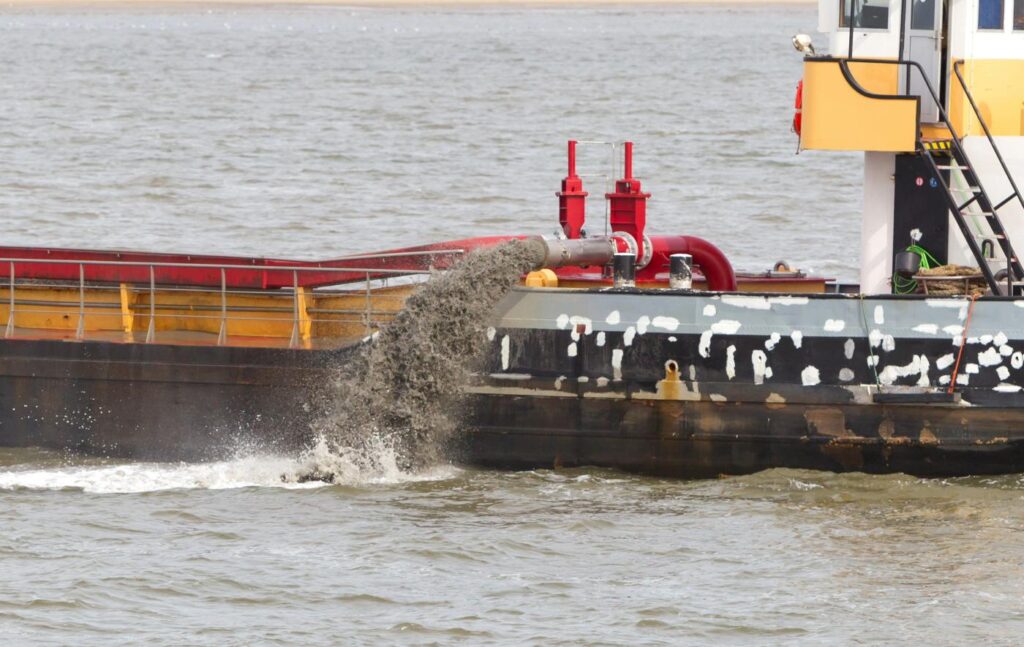
As awareness of environmental impacts grows, international and regional regulations have become critical in shaping how dredge boat operations are conducted. These regulations aim to minimize the ecological footprint of dredging activities while allowing essential projects, such as navigation maintenance, mining support, and environmental restoration, to proceed responsibly.
At the international level, conventions such as MARPOL (the International Convention for the Prevention of Pollution from Ships) set broad environmental standards for all types of vessels, including dredge boats and dredge barges. MARPOL regulates waste disposal, fuel emissions, and operational discharges, ensuring that dredging activities adhere to strict environmental protection measures. Additionally, the London Convention and its Protocol regulate the dumping of materials at sea, requiring permits and environmental assessments before dredging projects can be undertaken.
In the United States, the Environmental Protection Agency (EPA) and the U.S. Army Corps of Engineers enforce regulations under the Clean Water Act and the Marine Protection, Research, and Sanctuaries Act of 1972. These bodies require comprehensive evaluations of dredge boat activities, including sediment quality testing and assessments of potential impacts on aquatic ecosystems. Similar regulations exist in regions like the European Union and Australia, where national guidelines tightly control how dredging boats or dredger barges can operate.
One key aspect of modern regulation is the mandatory use of Environmental Impact Assessments (EIAs) before beginning a dredging project. An EIA evaluates potential risks to water quality, marine life, and nearby communities, allowing authorities to impose conditions or require modifications to dredge boat operations to minimize harm. In some cases, projects may be denied or delayed until suitable mitigation measures are proposed.
Regulations have directly influenced the design and operation of dredge boats and dredger barges, leading to the adoption of cleaner engines, reduced-turbidity dredging techniques, and real-time environmental monitoring systems. Compliance is no longer optional; it is an essential aspect of conducting successful and sustainable dredging operations.
By adhering to these regulatory frameworks, dredging companies help protect marine ecosystems while maintaining the critical functions that dredging boats and dredger barges provide for global infrastructure and environmental management.
Best Practices for Minimizing Environmental Impact
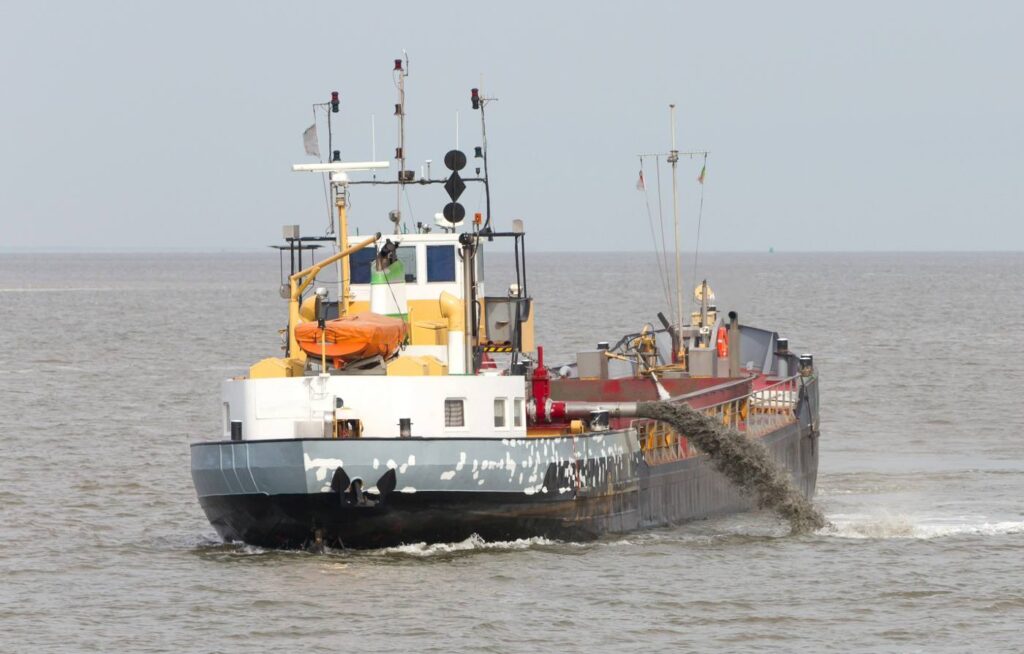
Reducing the environmental footprint of dredge boat operations is no longer optional; it’s a vital part of responsible dredging. Adopting best practices not only protects aquatic ecosystems but also ensures the long-term viability of projects and compliance with regulations. Here are some key strategies to minimize the impact of dredging activities:
Use of Eco-Friendly Dredging Techniques
Precision dredging methods are designed to remove only the necessary amount of material, minimizing disturbance to the surrounding environment. Technologies like GPS-guided dredging allow operators to target specific areas accurately, reducing the overall environmental impact.
When choosing between hydraulic and mechanical dredging methods, it’s important to consider the project’s sensitivity. Hydraulic dredging is generally less disruptive for large-scale sediment removal, while mechanical dredging can offer better control in delicate habitats. Evaluating the specific conditions and environmental priorities helps ensure the chosen technique is the least invasive.
Implementing Silt Curtains and Barriers
One of the most effective methods for reducing sediment dispersion during dredging operations is the use of silt curtains and barriers. These physical barriers contain suspended sediments within the work area, preventing them from clouding broader ecosystems. Proper installation and monitoring of these barriers are essential, especially in projects near coral reefs, fish spawning areas, or drinking water sources.
Real-Time Environmental Monitoring
Continuous monitoring is crucial for maintaining environmental standards during dredging operations. Turbidity sensors placed around the site can provide real-time feedback on water clarity, allowing crews to adjust dredge boat operations as needed. In sensitive marine environments, acoustic monitoring tools can detect the presence of marine mammals and trigger immediate pauses in activity to prevent disturbance. Real-time data collection enables faster and smarter decision-making, ensuring compliance with environmental regulations.
Selecting the Right Dredge Equipment
Choosing the right dredge boat and dredging tools can significantly minimize environmental impacts. Low-impact dredging boat designs, such as those with reduced turbidity dredge heads or quieter propulsion systems, are becoming more available.
Modern, fuel-efficient dredger barge models further contribute to environmental protection. These advanced designs feature cleaner engines, optimized hull shapes for better fuel efficiency, and systems for capturing and treating dredged material more responsibly. Investing in next-generation dredge boats and dredger barges not only reduces emissions but also enhances project sustainability over the long term.
Implementing these best practices helps ensure that dredging projects meet both operational goals and environmental stewardship standards, benefiting both industries and ecosystems alike.
Conclusion
Dredging plays a vital role in supporting global infrastructure, from maintaining navigable waterways to restoring essential ecosystems. However, the environmental impacts associated with dredge boat operations cannot be overlooked. Balancing the needs of infrastructure development with responsible environmental stewardship is crucial for ensuring long-term success, not just for industries but for the ecosystems that support them.
The adoption of greener dredge boat technologies, low-impact dredging practices, and real-time environmental monitoring has opened new pathways for minimizing harm while maintaining project efficiency. Modern advancements in dredging boat and dredger barge designs offer significant improvements in reducing emissions, limiting sediment dispersion, and protecting marine habitats.
Project managers, operators, and decision-makers play a pivotal role in this shift. By investing in sustainable dredging solutions and prioritizing best practices, the dredging industry can move towards a future where development and environmental health go hand in hand. Every step taken toward greener operations strengthens both the resilience of infrastructure projects and the ecosystems they affect, ensuring a positive legacy for generations to come.


